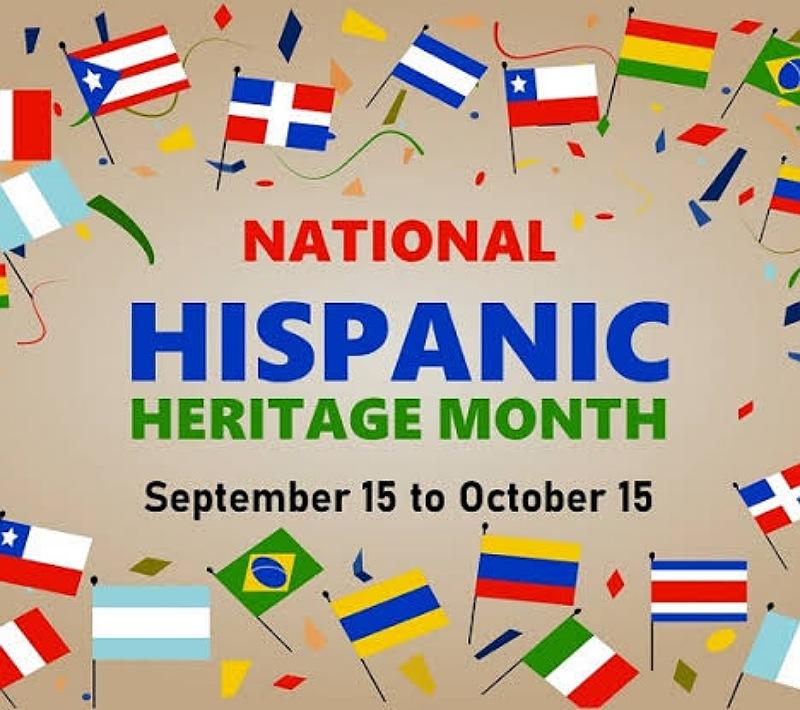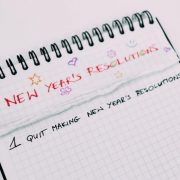Hispanic Heritage Month 2023: Everything You Need to Know About The Celebration

Hispanic Heritage Month is an annual celebration in the United States that runs from September 15th to October 15th. It’s a time to recognize and honor the contributions, culture, and history of Hispanic and Latino Americans.
The month-long observance was established in 1988 to encompass the independence days of several Latin American countries, including Mexico, Chile, and five Central American nations. Over the years, it has grown into a significant cultural event with a rich history and deep significance.
On September 14, 2023, President Joseph R. Biden JR. proclaimed September 15 through October 15, 2023, to be Hispanic Heritage Month.
The focus of Hispanic Heritage Month 2023 is on the themes of prosperity, power, and progress within the Hispanic community, recognizing the significant contributions made by Hispanics to the economic, political, and social growth of the U.S. This central theme is presented as “Latinos: Driving Prosperity, Power, and Progress in America.”
These three interrelated themes – prosperity, power, and progress – collectively showcase how economic success among Hispanics leads to increased influence and authority, ultimately resulting in progress for their communities.
In this article, we’ll delve into the origins, significance, and ways people celebrate Hispanic Heritage Month, as well as explore the diverse cultures and notable figures within the Hispanic and Latino community. Keep reading!
Origins of Hispanic Heritage Month
The roots of Hispanic Heritage Month can be traced back to the mid-20th century when several individuals and organizations recognized the need to celebrate and honor the Hispanic and Latino communities’ contributions to American society.
One of the key figures in the establishment of this observance was Dr. Hector P. Garcia, a Mexican-American physician and civil rights advocate. In the 1960s, he began a campaign to create a national week of recognition for Hispanic Americans.
Dr. Garcia’s efforts culminated in President Lyndon B. Johnson’s proclamation of National Hispanic Heritage Week in 1968. The week-long celebration was set to coincide with the independence anniversaries of several Latin American countries, including Costa Rica, El Salvador, Guatemala, Honduras, and Nicaragua, which all gained their independence on September 15th.
In addition to these countries, Mexico’s independence day falls on September 16th, and Chile’s on September 18th. This provided a meaningful and historical backdrop for the celebration.
Evolving into Hispanic Heritage Month
Over time, the observance expanded beyond a single week, and in 1988, it was officially designated as Hispanic Heritage Month. President Ronald Reagan signed the bill into law, extending the celebration from September 15th to October 15th each year. This 30-day period allows for a more comprehensive exploration of the diverse cultures, traditions, and contributions of Hispanic and Latino Americans.
Significance of Hispanic Heritage Month

Hispanic Heritage Month is significant for several reasons. Firstly, it highlights the importance of cultural diversity and the mosaic of traditions, languages, and backgrounds that make up the Hispanic and Latino communities in the United States. It serves as a reminder that these communities have deep historical roots in the country and have made enduring contributions to its development.
Additionally, the observance helps combat stereotypes and misconceptions about Hispanic and Latino Americans. By showcasing the achievements of individuals from these communities in various fields, from politics and science to the arts and sports, it underscores the richness of their contributions to American society.
Furthermore, Hispanic Heritage Month fosters a sense of pride and unity among Hispanic and Latino Americans. It encourages people from these communities to celebrate their heritage and share their cultural traditions with others. This not only strengthens their own cultural identity but also promotes cross-cultural understanding and appreciation among all Americans.
How is Hispanic Heritage Month Celebrated?

Hispanic Heritage Month is celebrated in a variety of ways across the United States. Communities, schools, businesses, and cultural organizations often host events and activities that showcase Hispanic and Latino culture. Here are some common ways in which the month is celebrated:
1. Cultural Festivals
Many cities hold festivals that feature Hispanic and Latino music, dance, food, and art. These events are open to the public and provide an opportunity for people to experience the vibrancy of these cultures.
2. Educational Programs
Schools often incorporate Hispanic Heritage Month into their curriculum, teaching students about the history, contributions, and achievements of Hispanic and Latino Americans. This may include guest speakers, art projects, and presentations.
3. Art Exhibitions
Museums and galleries may host exhibitions that highlight the work of Hispanic and Latino artists, both historical and contemporary.
4. Film Screenings
Film festivals and screenings of movies from Latin American countries or featuring Hispanic and Latino actors and directors are common during this month.
5. Food and Cuisine
Restaurants and food vendors may offer special menus featuring dishes from various Hispanic and Latino cultures, allowing people to savor the flavors of these rich culinary traditions.
6. Lectures and Panels
Universities and cultural institutions often organize lectures and panel discussions on topics related to Hispanic and Latino history, culture, cultural diversity, and contemporary issues.
7. Parades
Some cities hold parades that celebrate Hispanic and Latino culture, featuring colorful floats, music, and traditional costumes.
8. Community Service
Many Hispanic and Latino community organizations use this month as an opportunity to give back to their communities through volunteer work and charitable activities.
Diversity within Hispanic and Latino Cultures
One of the most striking aspects of Hispanic and Latino cultures is their diversity. These terms encompass a wide range of countries, ethnicities, languages, and traditions. Some of the key cultural influences within the Hispanic and Latino communities include:
1. Mexican Culture
Mexican Americans make up a significant portion of the Hispanic population in the United States. Their culture is known for its vibrant music, colorful art, and rich culinary traditions, including tacos, tamales, and mole.
2. Puerto Rican Culture
Puerto Ricans have a unique cultural identity that combines elements of Spanish, African, and indigenous Taino influences. Salsa music and dance are integral parts of Puerto Rican culture.
3. Cuban Culture
Cuban Americans have made notable contributions to the arts, particularly in the world of music and dance. The Cuban influence is strongly felt in Miami, Florida, where there is a thriving Cuban community.
4. Dominican Culture
Dominican Americans have brought their love of merengue music, baseball, and flavorful dishes like mangu and sancocho to the United States.
5. Central American Cultures
The countries of Central America, including El Salvador, Guatemala, Honduras, and Nicaragua, each have their unique cultural traditions, but they share common threads in music, dance, and cuisine.
6. South American Cultures
South American countries like Colombia, Venezuela, and Peru have diverse cultural heritages, with influences from indigenous peoples, Africans, and Europeans. Their contributions include diverse cuisines, music, and dance forms like cumbia and salsa.
7. Spanish-Speaking Caribbean
Countries like the Dominican Republic, Cuba, and Puerto Rico are collectively referred to as the Spanish-speaking Caribbean and have a shared history and cultural ties, including a love for music, dance, and flavorful cuisine.
8. Indigenous Cultures
Many Hispanic and Latino communities have strong connections to indigenous cultures, preserving traditions, languages, and customs that date back centuries.
Notable Hispanic and Latino Figures

Hispanic and Latino Americans have made significant contributions in various fields. Here are just a few notable Hispanic and Latino Figures who have left a lasting impact:
1. Cesar Chavez
A labor leader and civil rights activist, Chavez co-founded the United Farm Workers union and fought for the rights of agricultural laborers.
2. Sonia Sotomayor
Appointed as the first Hispanic and Latina Supreme Court Justice, Sotomayor has had a distinguished legal career and has been an advocate for diversity and inclusion in the legal profession.
3. Roberto Clemente
A legendary baseball player from Puerto Rico, Clemente not only excelled on the field but also dedicated himself to humanitarian efforts, tragically losing his life in a plane crash while delivering aid to earthquake victims in Nicaragua. He remains an icon of sportsmanship and community service.
4. Dolores Huerta
As a labor leader and civil rights activist, Huerta co-founded the United Farm Workers alongside Cesar Chavez. Her tireless advocacy for farmworkers’ rights and social justice has left a lasting legacy.
5. Julia de Burgos
A Puerto Rican poet and activist, de Burgos is celebrated for her contributions to modern poetry in Spanish. Her work addresses themes of identity, love, and social justice.
6. Ellen Ochoa
A former NASA astronaut and the first Hispanic woman to travel into space, Ochoa has made significant contributions to science and space exploration.
7. Sylvia Mendez
Mendez played a pivotal role in the desegregation of California schools in the 1940s. Her family’s lawsuit led to the end of segregation of Mexican-American students in California, setting an important precedent for civil rights cases.
8. Rita Moreno
An accomplished actress, singer, and dancer, Moreno is one of the few artists to have achieved EGOT status, meaning she has won an Emmy, Grammy, Oscar, and Tony Award. She has been a trailblazer for Hispanic women in entertainment.
9. Sandra Cisneros
A renowned author, Cisneros is known for her works, including “The House on Mango Street.” Her writing explores the experiences of Latina women and the complexities of cultural identity.
10. Oscar de la Renta
A world-famous fashion designer originally from the Dominican Republic, de la Renta‘s creations have graced red carpets and runways around the globe, and he remains an influential figure in the fashion industry.
Final Thoughts
Hispanic Heritage Month is a time to celebrate the rich and diverse tapestry of Hispanic and Latino cultures in the United States. It’s an opportunity to honor the contributions of individuals, communities, and movements that have shaped the nation.
As we reflect on the significance of this observance, it’s important to remember that the Hispanic and Latino communities are not monolithic; they are a mosaic of cultures, languages, and traditions that have enriched American society in countless ways.
As Hispanic Heritage Month continues to evolve and grow, it serves as a reminder of the importance of inclusivity and cultural appreciation in building a more diverse and harmonious society. It encourages us all to embrace the beauty of different cultures and recognize that the strength of our nation lies in its diversity.
Whether you’re attending cultural festivals, learning about Hispanic and Latino history in school, or simply enjoying a delicious meal from one of these vibrant cultures, Hispanic Heritage Month offers a chance to come together, celebrate, and appreciate the extraordinary contributions of Hispanic and Latino Americans to the United States.
Remember, Todos Somos, Somos Uno: We Are All, We Are One!
All images are sourced from google

